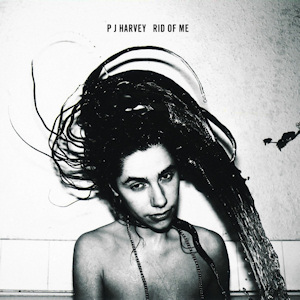So y’all know PJ Harvey right? The folk singer who did “Let England Shake” about 10 years ago, really popular with the British hipsters? I always assumed that was a pretty representative album for her career. It fits into a category of Folk that I respect in the abstract but don’t actually care for all that much, acts like Richard Dawson who write poncy medieval ren fair music with an ironic edge that’s always without fail about capitalism or the decline of the British Empire or something. The style is very popular with British indie critics like The Quietus and tends to get lots of Mercury Prizes. There’s nothing wrong with this music, it’s just not personally to my tastes, so I never really checked out PJ Harvey’s back catalogue. Recently that changed, and I’d like to take you on a tour of two of her more popular songs that got me hooked on 90s-2000s PJ Harvey.
Sheela-Na-Gig
Sheela-Na-Gig is an excellent example of what Harvey does right in folk music, but translated back into a fairly boiler plate alt rock sound. This is a track off her debut album “Dry” and it has a kind of general appeal while still showcasing what makes Harvey unique. If you listen to as much 90s chick rock as I do, the lyrical themes here will be quite familiar: it’s a feminist angst anthem about being slut shamed by some random dude at a bar. The metaphor is a reference to an Irish architectural grotesque that depicts a woman with a greatly exaggerated vulva. The chorus uses this comparison as a term of abuse, “He said, Sheela-Na-Gig, Sheela-Na Gig, you exhibitionist.”
This would make for a fairly good, if somewhat disposable, 90s alt rock single, but it’s Harvey’s lyricism that really sells the track. She has a flair for creating a single vigniette, and using perspective shifts to create double entendre. The Sheela-Na-Gig is a mocking hyperbole from the man’s perspective, but in the opening passage she uses a pre-Christian icon as a way to symbolize her motivations, “Look at these my child-bearing hips, and look at these my ruby-red, ruby lips, and look at these my work strong arms.” The central issue of female exhibitionism is given two different meanings through the same symbol, interpreted from two opposing perspectives. It’s a really neat literary flourish, but the song isn’t brow beating or pretentious in the slightest, it has a focused ‘Don’t bore us get to the chorus’ approach and a high octane performance.
The other major aspect of Harvey’s songwriting on display here is her referential approach. The second verse uses the line “Gonna wash that man right out of my hair” from South Pacific, giving one instance of a woman cleaning herself because of a man. This is, again, reversed by the unnamed man’s referential line in the third verse “He said, wash your breasts, I don’t want to be unclean, he said wash your breast, take those dirty pillows away from me,” with “dirty pillows” being a reference to a similar line from Stephen King’s Carrie. The contrast between both the lines and between the works they call upon really supports the perspective contrasts within the song, using references as shorthand for more complex themes.
Rid of Me
After the debut album’s success, PJ Harvey could have rode into a wave of hits and mainstream success on the rock charts. Instead, she chose to go in the opposite direction, working with legendary hardcore and noise rock producer Steve Albini to make one of the most ugly and brooding rock albums of the era. “Rid of Me,” is the album name, and the title track is in some ways a repeat of Sheela-Na-Gig with a far more intense approach.
The track is a slow burn, building from a bassline and drum fill into a thrash and burn banger over the course of several minutes. The narrator begins from the position of groveling ex-girlfriend begging not to be abandoned. However, as the extended first verse build, the imagery becomes gradually more violent. PJ Harvey delivers this in a very frail tone, making the lyrical contrast more subtle than it would be coming out of the lips of say, Courtney Love. A line like “I’ll make you lick my injuries,” has a double meaning in reference to the lines directly before and after. In the context of the previous verse, it seems love sick, while in the context of the chorus where Harvey breaks open into a violent scream of rage, it seem like a threat. The song also features charged and uncomfortable imagery, “lick my legs, I’m on fire,” is an innocuous 6 word sentence that creeps the hell out of me in the context of the song.
A compelling aspect of Harvey’s early career is the folky-ness of it all. Punks have a long history of going into folk rock when they get old, but Harvey merged the two in her early years as well. And not in the gimmicky Violent Femmes way either, her music is not a slapdash fusion. The blues rock riffs and chord progressions go almost unnoticed except when she calls explicit attention to it by say, covering “Highway 61 Revisited,” in a pitchy wail. She has a compelling back catalogue, and I encourage you to use these two songs as a sample.

